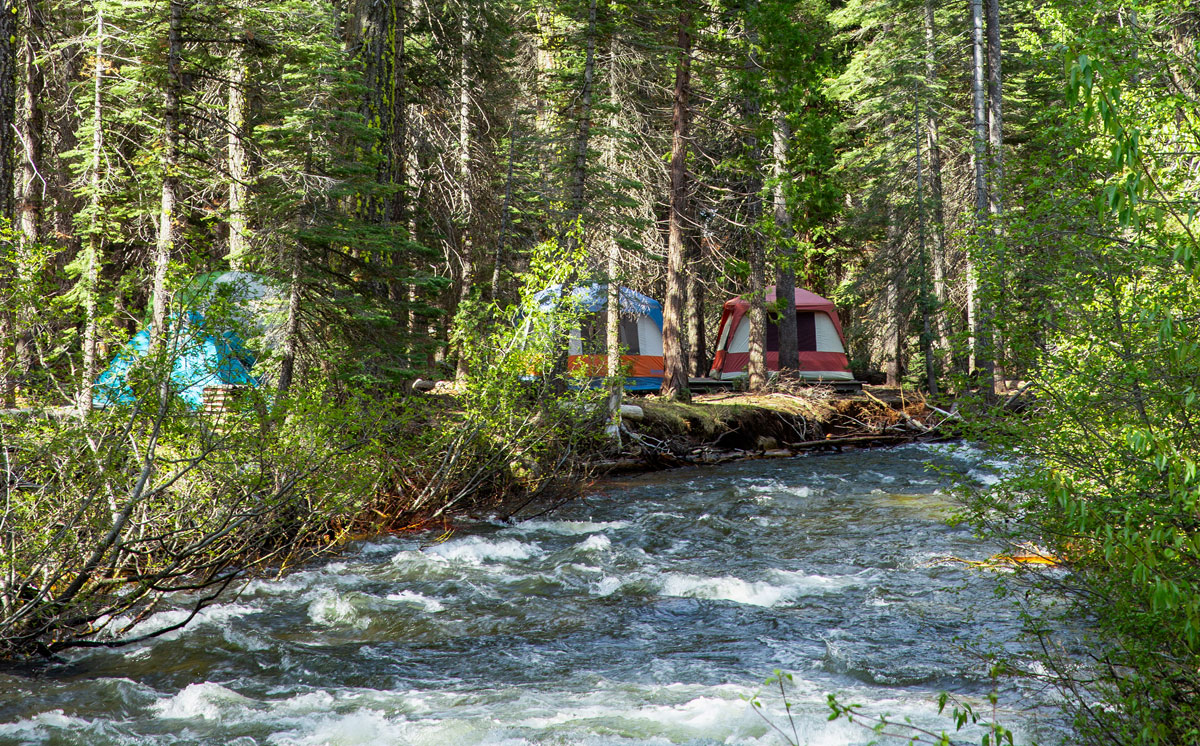
Photo by Nick Cahill
For nearly 75 years, the Sierra Nevada Field Campus has helped people learn in and from the environment
By Kanaga Rajan
Geologist Raymond LeBeau first visited SF State’s Sierra Nevada Field Campus (SNFC) on a course field trip when he was a master’s student. After that, he couldn’t stop returning.
“I just kept finding myself back up there, and very happily so. It’s always so much fun staying there because you’re right by the river that runs through. It’s really beautiful,” says LeBeau (M.S., ’23), who spent a lot of time there as a student researcher. “There are always all these classes going on: art classes, birding and mushroom classes, astronomy classes, all sorts. You mingle with all these interesting people and talk about your research.”
Despite its beauty and power to inspire and educate, SNFC often comes as a surprise to people — even SF State alums. That’s understandable: It’s not exactly around the corner from the Quad. Situated a little over 200 miles northeast of SF State’s main campus, SNFC started in 1949 and is now a 7.1-acre campus in remote Sierra County near the Sierra Buttes and the North Yuba River. Each summer, hundreds of people visit for research, workshops, meetings, social gatherings and more.
“I don’t know another place in California where anyone can sign up for a class and be with an expert instructor and stay overnight and really immerse themselves in whatever it is they’re learning,” says the campus’ newest director, Darrow Feldstein, after his first season on site.
For nearly 75 years, the Sierra Nevada Field Campus has been a training facility for recreational professionals and teachers, a children’s camp, a research field site, a nature haven for creatives, a field trip destination and so much more. But at its core, SNFC has always been an eclectic community learning in and from nature.
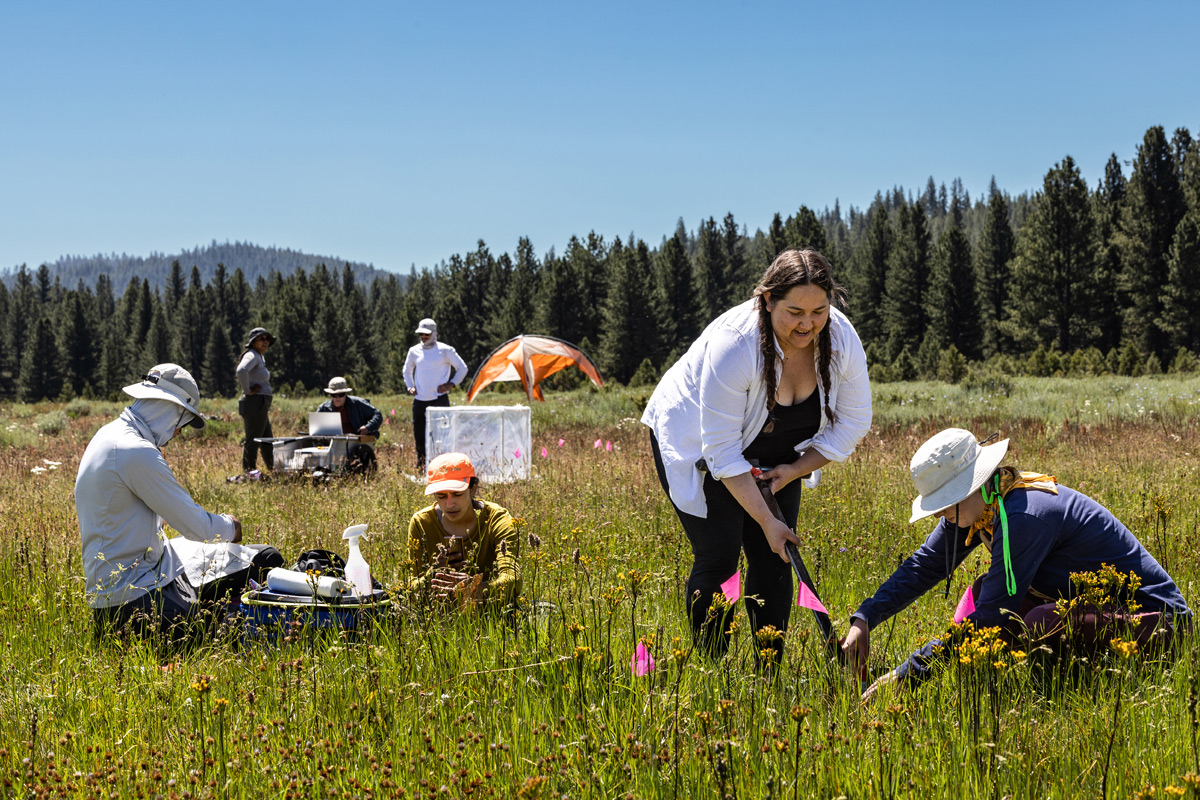
‘Nerding out’ on nature
“The first picture that comes to my mind is the place where I usually [have my] tent when I’m leading my writing retreat, which is right next to the North Yuba River, footsteps away from the river bank … [I’ve] gotten to know this bend in the river intimately,” says writer Sarah Rabkin, who’s taught at the Field Campus since the late 1980s. She’s seen river otters swim under her feet and watched American dipper fledglings act like hangry teenagers.
There’s a magic in this place, she explains. In her “High- Country Writing Retreat,” she helps participants connect with a sense of place to tap into their creativity. From the change in elevation to being surrounded by firs and pines, Rabkin believes the location facilitates participants’ exploration of different writing styles and topics.
Summer is SNFC’s busiest time, largely due to the 30-plus workshops and courses. Topics range from painting and songwriting to fly fishing and medicinal flora.
“It’s the one week a year my wife says I just get to completely nerd out,” says mycologist Brian Perry (B.S., ’96; M.A., ’02), who’s been visiting the campus since he was an undergrad. Now a biology professor at Cal State East Bay, he teaches the beloved SNFC course “Fungi of the Sierra Nevada” and occasionally brings his own lab to the locale.
“I didn’t know anyone in the class, but by the end of the week I had a bunch of new friends and it was just this amazing experience,” says Perry of his first Field Campus experience, which included birding and local flora classes.
Perry’s story isn’t unique. SNFC often becomes a fixture in people’s lives, regardless of profession or age. “Over many decades, I had the good fortune to visit SNFC during the summer to teach and learn about the amazing natural diversity surrounding the Field Campus landscape,” says SF State Lecturer Emeritus Michael Vasey.
Vasey serves on the board of the Friends of the SNFC, an all-volunteer nonprofit organization that raises funds to update facilities, boost attendance and coordinate volunteer efforts. Like Perry and Rabkin, who are also active Friends, Vasey has deep ties to SNFC. Vasey has been part of the community for more than 40 years, first as a graduate student and eventually as an instructor and more.
“As John Muir discovered, the Sierras can and do inspire a passion for learning about nature, for caring about it and ultimately for forging future careers in the natural and physical sciences,” says Vasey. “Certainly, it had this effect on me.”
Science under the stars
Many people’s SNFC stories start as SF State student researchers using the campus as basecamp when they do field work. Today, the Red Clover Valley (RCV) meadow restoration project is one of the major SF State research efforts channeling students to the campus. Faculty geographers, atmospheric scientists and biologists are assessing how meadow restoration impacts a meadow’s ability to capture greenhouse gases.
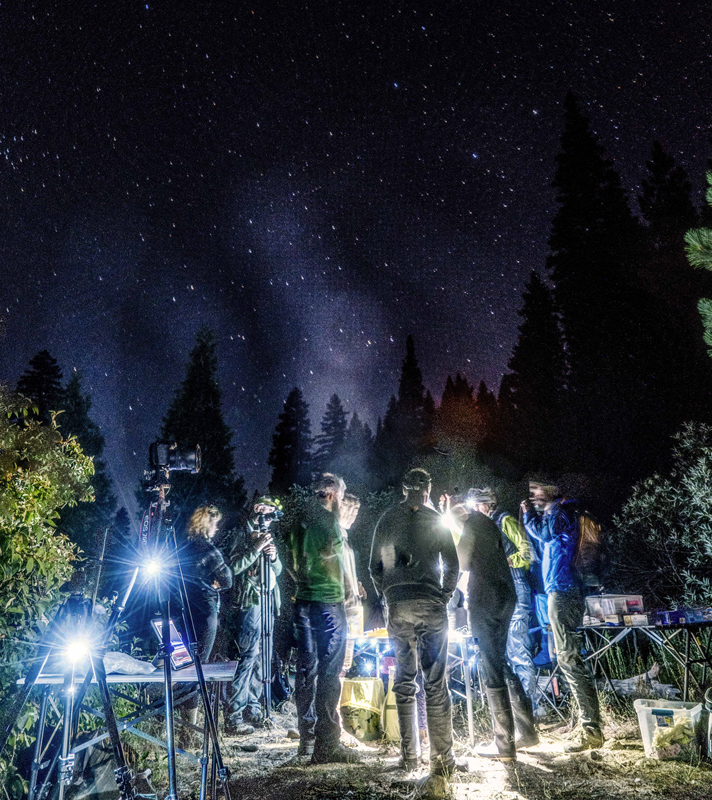
Night photo by Scott Fin
“Students are intimately woven into the success of the project,” says School of the Environment Associate Professor Sara Baguskas. Students are the leaders, she adds, noting that their involvement on this project has been sizeable since 2019.
Baguskas says SNFC makes research more accessible to students because field work and camping can be daunting. This year, the RCV group had nearly a dozen student research assistants. Fourth-year undergrad Lillian Amaral first visited SNFC on a class field trip and was eager to return.
“It’s not like you’re a student enrolled in a class where the teacher has everything planned out. … Actually, [lead faculty researcher Andrew Oliphant] explicitly told us, ‘This isn’t a field trip, and I haven’t thought of every single little thing. We’re all a team here,’” Amaral says. She recounts eagerly learning alongside other researchers, enjoying refreshing swimming holes after a long day and being lulled to sleep by the river.
Throughout the Field Campus, students mingle with renowned researchers, leading to casual interactions that are valuable for students and faculty.
“I remember it was a starry night, and a master’s student was talking to me more candidly about her experiences and the struggles that she’s had and things that she’s had to overcome, like building self-confidence as a woman,” says Baguskas, acknowledging the importance of women mentors in field research.
Looking upstream
Feldstein plans on fostering more student opportunities by learning their wants and needs. Though he acknowledges one challenge is hard to address — SNFC’s distance from the rest of the University — he’s eager to work with the SF State community to make SNFC more accessible.
“I don’t think the Field Campus traditionally has had any relationship with the Indigenous community of the area, and that’s definitely a place where I could see room for improvement for us,” he says. He also wants to establish courses about relationship to the land and land-stewardship classes like prescribed fire and watershed management.
But while he looks ahead to new growth, he also wants to preserve what SNFC has been for so many for so long: a place of community, history and connection with nature.
“People from a variety of backgrounds, interests and experiences come here to share and talk about their love for the natural world in a really beautiful and safe setting, whether that’s around the fire, walking through the forest or sitting and chatting by the river,” Feldstein says.
Bonus Content
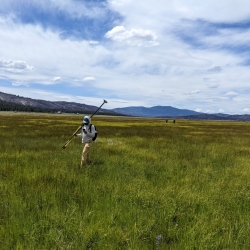
Slowing Down, Seeing More
Alumnus geologist Raymond LeBeau's (M.S., '23) lifetime of observing served him well as a student researcher at the Sierra Nevada Field Campus.
Features
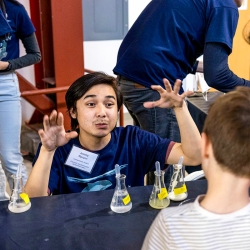
Forces of Nature
Through teaching, research, practices, activism and so much more, the University works every day to protect our planet.
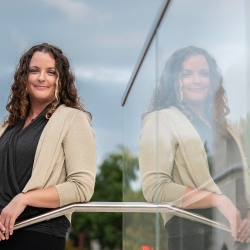
In Conversation with Ben Fong-Torres
The legendary journalist and Gator sits down for a talk with alumna Allison Crimmins, director of the federal government's Fifth Annual Climate Assessment.
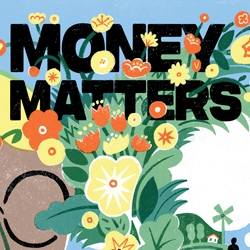
Money Matters
Forward-thinking alumni, students and faculty are demonstrating how investors can bankroll sustainability (and turn a profit doing it).